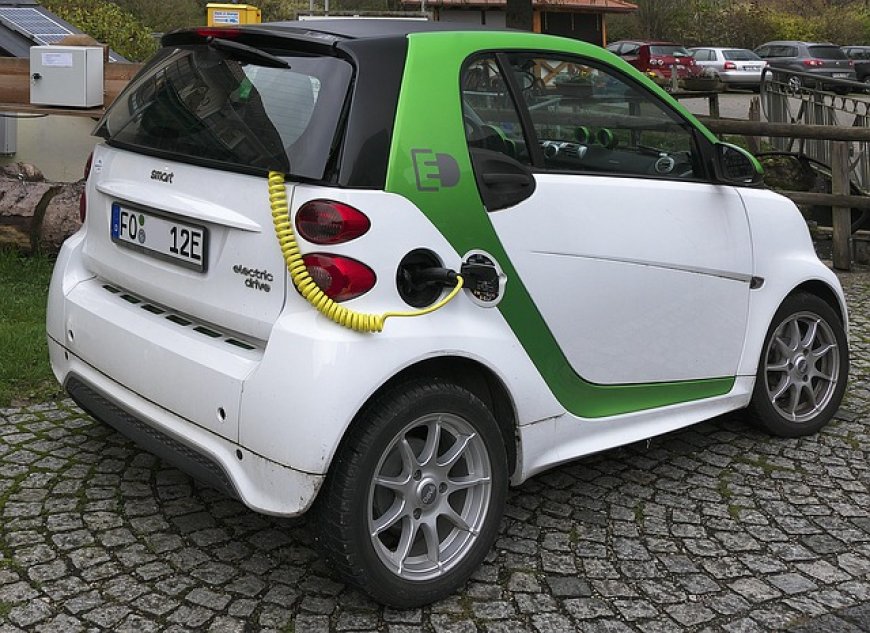Green or Just Clean? Unpacking India’s Electric Vehicle Revolution
India’s electric vehicle (EV) boom promises cleaner air and sustainable mobility. But is electric mobility truly green? Discover the real environmental impact of EVs in India and the road ahead.

India’s roads are changing. With government support and industry enthusiasm, electric vehicles (EVs) are no longer futuristic—they are mainstream. From Ola's e-scooters and Tata’s Nexon EV to state-run e-bus fleets, the country is accelerating its shift away from fossil-fueled transportation. But while the transition appears clean on the surface, a critical question remains: Is electric mobility truly green, or just a cleaner alternative with hidden costs?
Let’s delve deeper into the environmental realities behind India’s EV push.
The EV Boom in India: Driven by Policy and Pollution
India’s growing interest in electric mobility stems from a mix of air pollution concerns, oil dependency, and climate targets. According to NITI Aayog, India aims for 30% of all vehicles on the road to be electric by 2030.
To meet this goal, several initiatives are in place:
-
FAME II (Faster Adoption and Manufacturing of Electric Vehicles): Offers subsidies on EV purchases and charging infrastructure.
(Source) -
PLI Scheme for ACC Battery Manufacturing: To boost domestic production of advanced chemistry cells and reduce import dependency.
(Source)
Major automakers like Tata Motors, MG, and Ather Energy have rapidly expanded their EV portfolios, while ride-sharing platforms such as BluSmart are already operating all-electric fleets in major metros.
Is Electric Mobility Truly Green?
This is where things get nuanced. Electric vehicles don’t emit pollutants directly—but their overall environmental impact depends on how electricity is generated, how batteries are made, and what happens to them after use.
1. India’s Grid Is Still Coal-Heavy
According to CEA’s Load Generation Balance Report, coal still accounts for more than 70% of India’s electricity generation. So, when an EV charges at a public station, chances are it's powered by fossil fuels.
Until the grid becomes significantly cleaner, the upstream emissions of EVs may not be as low as we’d like to believe.
2. Battery Manufacturing Is Energy Intensive
Lithium-ion batteries—the heart of EVs—are made from materials like lithium, cobalt, and nickel. The mining and refining of these materials are energy-intensive and often associated with environmental degradation and human rights concerns, especially when sourced from countries with weak regulatory frameworks.
As highlighted in a Harvard study, battery production can contribute significantly to a vehicle's lifecycle emissions—especially if the energy used in manufacturing is from non-renewable sources.
3. Recycling and Battery Waste Remain a Grey Area
India is yet to build a robust battery recycling infrastructure. Without this, end-of-life EV batteries may become hazardous waste. A report by TERI notes that India needs clear policy and investment to manage this inevitable waste stream.
EVs Still Outperform ICE Vehicles Over Their Lifetime
Despite the challenges, most studies, including one from the International Council on Clean Transportation (ICCT), agree that EVs have lower lifetime greenhouse gas emissions than internal combustion engine (ICE) vehicles—even when powered by coal-dominated grids.
Key reasons include:
-
Zero tailpipe emissions, reducing urban air pollution
-
Higher energy efficiency (EVs convert 77% of electrical energy into motion vs. 12–30% for ICE vehicles)
-
Potential to be increasingly powered by renewable energy as India transitions its power sector
Local Gains: Air Quality and Public Health
In cities like Delhi, Bengaluru, and Chennai—choked by vehicular pollution—the electrification of transport is already showing local benefits:
-
Lower PM2.5 concentrations in pilot zones with electric buses and autos
-
Reduced noise pollution
-
Better public health outcomes over time
Data from the Centre for Science and Environment confirms that urban EV fleets can contribute significantly to reducing smog, particularly if coupled with clean power sources.
Can India Make Electric Mobility Truly Green?
Yes—but it will require action beyond just buying more EVs. A holistic approach is needed:
1. Decarbonizing the Power Grid
India must aggressively ramp up solar, wind, and hydroelectric capacity. Government targets under the National Electricity Plan aim for 500 GW of non-fossil capacity by 2030, but implementation must accelerate.
2. Establishing Battery Recycling Ecosystems
India should take cues from countries like Norway and Japan, where strict battery recycling laws ensure the reuse of rare earth materials. Initiatives by startups such as LOHUM are promising early signs.
3. Localizing Battery Production Sustainably
Reducing import reliance and encouraging cleaner production using renewable power is key. The PLI scheme for battery manufacturing needs strict environmental safeguards.
4. Public Transit Electrification
Instead of just personal EVs, electrifying public transport, cargo logistics, and two-wheeler fleets (used by delivery services) will bring scale and sustainability.
Conclusion: It’s Not Just About Switching the Engine
India’s EV revolution is real and necessary—but calling it fully “green” is premature. Without clean power, ethical battery sourcing, and responsible end-of-life management, electric mobility risks becoming a half-step toward sustainability.
That said, it is a better alternative to fossil-fueled transportation, and with the right policy and innovation, it can become truly green. The key is to look at electric mobility not just as a product, but as part of a larger ecosystem of energy, environment, and ethics.


















































